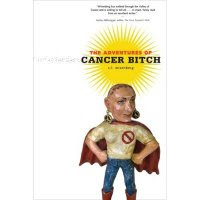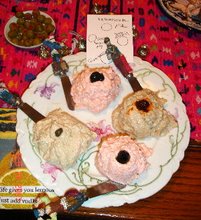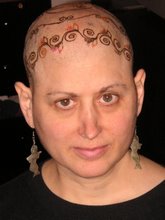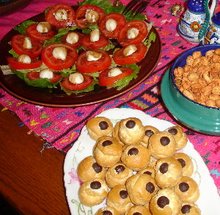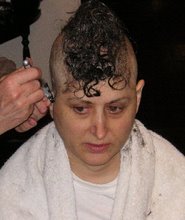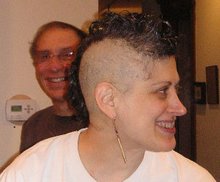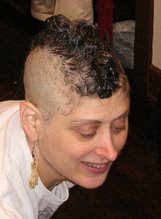

{Sorry--I couldn't figure out technically how to capture a still of the woman examining her breasts. It is much less sexy than this stock picture from photosearch.com. }
It took a while, but I finally found the un-blurred video from the ABC News local WJLA in Washington, DC., which showed--horrors!--a pretty 28-year-old woman with cancer (before surgery) examining her small, perky breasts. Reporter Gail Pennybacker, thank goodness, warns us beforehand that "Images are going to be graphic." Gosh!! Nipples!! Nipples, which are obscene, are going to be shown. Lock up your women and children! Your children will be traumatized by seeing nipples! Of course, they are not affected by daily, hourly images of war and mutilation--or "action" movies and videos.
The news station brought this all on itself by happening to air this during sweeps week, when viewership is measured. If WJLA wanted to be as blameless as Caesar's wife, it would have run this earlier in the month.
Meanwhile, conservative groups have criticized this display. The AP tells us: The Parents Television Council reacted cautiously to news of the series but suggested it saw the potential for problems.
"We hope that WJLA-TV is not using a crucial public health issue as a ratings stunt, and that the station has fully considered what is appropriate to tell this important story to the public in the most suitable manner possible," the group said in a statement. That might mean different versions of the story at 5 p.m. and at 11 p.m., it added.
I wish the reaction were more outlandish so I could make fun of it. It's also annoying that that first thing that pops up on the PTC web site is a study that says that images of violence against women are on the increase on TV. Really, how can anyone find fault with an organization that cares about violence against women (at least representations of it)? If you read further, you find the organization is Mrs. Grundy-ish (Does anyone say "Mrs. Grundy" any more?) about "indecency" and cursing and sex on TV. Yeah, a lot on TV boils down to immature sniggling about sex, but that's not my most pressing issue.
It's easier to make fun of another critic, Concerned Women for America, which strives "to protect and promote Biblical values among all citizens - first through prayer, then education, and finally by influencing our society - thereby reversing the decline in moral values in our nation." But reading about them makes me more scared than sarcastic. Separation of Church and State, anyone?

[Mrs. Grundy by Walter Crane, 19c]
[not to be confused with Miss Grundy of Archie Comics, pictured at top]
Breast cancer is one thing I do think about a bit. And I was and am lax on breast self-exams. Mostly, the hoopla about the news report is serving to remind me that I need to examine my right breast, that I shouldn't just rely on the six-month mammograms and doctor exams. So ladies, go to it! See instructions and illustrations at this site.
Click here for visuals that are really adult and graphic and for which our country is to blame.
"Murder is a crime; describing murder is not. Sex is not a crime. Describing sex is. Why?" Gershon Legman wrote years ago. I know, I know, this weakens all of the above, because my implied argument is that showing a breast exam is not a smutty, sexual event, but it seemed apropos.








